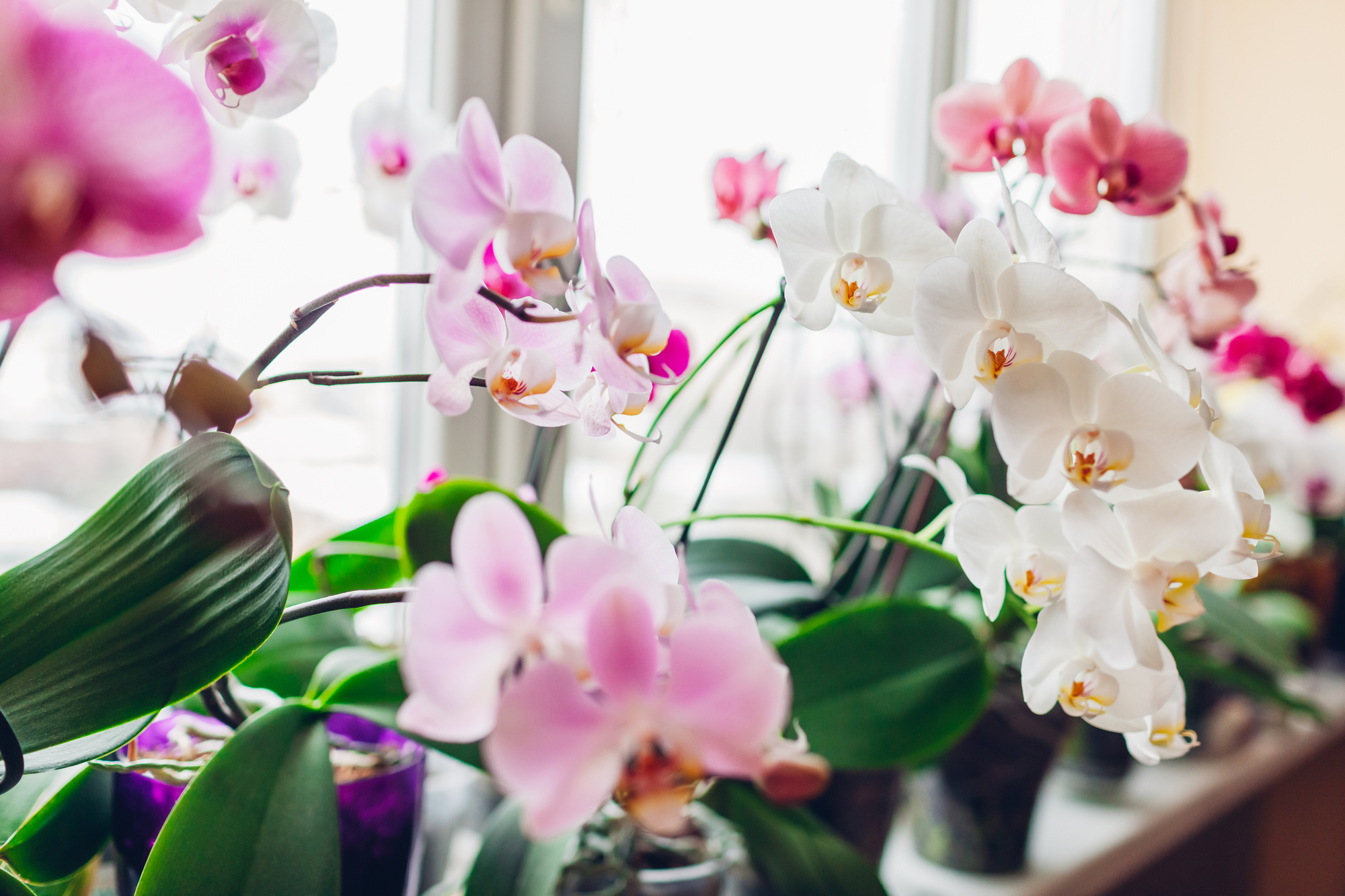
Different plants require different types of soil and some, such as the popular Phalaenopsis orchid, require more unusual mediums. While it's possible to buy these mediums, it's useful to know how to make your own with an orchid potting mix recipe.
If you've discovered how to care for orchids, you'll know it's necessary to repot them every couple of years. It may also be necessary to repot an orchid if it has outgrown its container, or if its potting mix has gone bad.
Orchids are often grown in sphagnum moss, fir bark and other porous plant fibes. Over time, it becomes necessary to replace these mediums or top them up. Although, only repot your orchid when it's finished blooming and is in its resting phase.
If you'd like to make your own DIY orchid potting mix, here's what our plant expert suggests.
What are the best ingredients for an orchid potting mix?

Phalaenopsis orchids are popular houseplants and are often bought as gifts. These orchids tend to be grown in various well-draining plant fibers, such as fir bark, coconut coir, and sphagnum moss, which will need replacing and topping up over time. Particularly, if you want your orchids to re-bloom.
"In nature, Phalaenopsis orchids grow on trees or other surfaces, rather than in the ground, so they don’t want a soil-like medium," explains Justin Hancock, horticulturalist at Costa Farms. "It’s key to have a mix with lots of aeration."
"Small chunks of wood bark are the most common ingredient in these mixes for epiphytic orchid," Justin adds. "Because the individual bark chunks fit together irregularly, there’s lots of air space to help the orchid roots breathe."
"Bark chunks also help provide some heft and support the plant in the pot. Because bark chunks don’t hold moisture well, mixing in some peat moss or coir can be helpful. These materials act like sponges, absorbing moisture and making it available to the orchid roots to absorb."
"Perlite is another common addition to orchid mixes. It’s a puffed volcanic rock that helps absorb moisture while also providing aeration." You can find small bags of perlite from Amazon, which are ideal for adding to houseplants.
What's in an orchid potting mix recipe?

It's possible to buy a bag of orchid potting mix already made up, but it is simple enough to make your own too. This is useful if you have a number of orchids to care for and have the space to keep the various ingredients.
"A popular recipe for an orchid potting mix is about 60-70% bark, 10% perlite, and 20-30% coir," says Justin.
An organic pine bark from Walmart would work well as the base in an orchid mix recipe. If you want to water orchids correctly, saturate the potting mix, then allow it to dry out before you water your plant again.
Other orchid potting mix recipes include:
- 50:50 mix of perlite and bark
- 80:10:10 fresh fir bark, horticultural charcoal and sponge rock
- 50:40:10 peat moss, perlite and charcoal
FAQs
Should I fertilize my orchid potting mix?
Like most plants, Phalaenopsis orchids will benefit from being fertilized during their growth phase. However, you should only be repotting an orchid during its resting phase, so you won't want to fertilize it at this point.
"Fertilizing orchids can be helpful in getting them to grow their best," says Justin. "Use a fertilizer designed for epiphytic orchids. These products are formulated to provide the right mix of nutrients at the right strength."
"Frequency depends on the product you use (always check the label’s recommended application rates). Water-soluble fertilizers may potentially be used as often as weekly in the growing season."
"Discontinue fertilizer in the late fall and start again in early spring," says Lisa Eldred Steinkopf. "When the day length shortens in the fall, plants slow down their processes."
You'll find plenty of specialist orchid fertilizers, such as this one from Amazon, to use when you do need to fertilize your plants.







